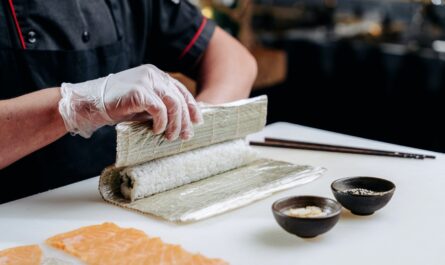Sushi enthusiasts know that the art of making sushi is not just about selecting the freshest ingredients; the tools you use play a crucial role as well. Among the myriad of knives used in the Japanese culinary world, the yanagiba and deba knives hold a special place. Understanding the difference between yanagiba and deba knives is essential for perfecting your sushi preparation techniques.

What is a Yanagiba Knife?
The yanagiba knife is a long, slender, and elegant knife mainly used for slicing raw fish. Its design is specifically tailored for producing clean cuts, which is essential for sashimi and sushi presentations. The blade of a yanagiba knife is usually single beveled, allowing it to create frictionless slices, which help in maintaining the texture and integrity of fish fillets.
Characteristics of a Yanagiba Knife
One of the standout features of the yanagiba is its length. The long blade allows for precision slicing and prevents the need for sawing motions, which can damage the delicate fish flesh. The handle is typically made from lightweight wood, ensuring balance and maneuverability.
What is a Deba Knife?
On the other hand, the deba knife is a robust and versatile knife that serves a different purpose in the kitchen. Primarily used for butchering and breaking down fish, the deba knife boasts a thicker blade, allowing it to cut through bones and tough materials without compromising on precision.
Characteristics of a Deba Knife
The weight and thickness of the deba knife distinguish it from the yanagiba. While it is excellent for filleting fish, its robustness also makes it suitable for cutting through poultry and other meats. This dual-purpose nature makes it a valuable tool in both sushi restaurants and home kitchens.
Key Differences Between Yanagiba and Deba Knives
Blade Design
The most obvious difference between yanagiba and deba knives lies in their blade design. The yanagibas long, thin blade is crafted for seamless slicing, whereas the debas thick and durable blade is designed for strength and versatility.
Usage
While both knives are crucial in sushi-making, their usage is distinct. Use the yanagiba knife for slicing boneless fish fillets into beautiful thin pieces, ideal for sashimi. Conversely, the deba knife is your go-to for cutting through fish bones and preparing meat for cooking.
Bevel Edge
The yanagiba knife generally features a single bevel edge, allowing for precise cuts with minimal friction. The deba, while it can also have a single bevel, often features a stronger double bevel to support its bone-cutting capabilities.
When to Choose Yanagiba Over Deba?
If youre aiming for flawless sashimi or thinly sliced sushi rolls, the yanagiba knife is your best bet. Its ability to make clean, thin cuts cannot be matched by the deba.
When to Choose Deba Over Yanagiba?
For tasks like filleting large fish or cutting through bones, the deba knife is superior. Its sturdy design ensures that it can handle tougher tasks that would likely damage the yanagiba.
The Role of Japanese Knives in Sushi Making
The art of sushi making often starts with the knife. Mastering the right technique with the appropriate knife ensures that the delicacy of the ingredients is respected and enhanced, leading to an authentic sushi experience.
Caring for Your Japanese Knives
Proper maintenance of knives like the yanagiba and deba is key to their longevity. Regular sharpening, correct storage, and washing by hand are all practices that help maintain their functionality.
Why Sushi Chefs Prefer Japanese Knives
Sushi chefs worldwide prefer Japanese knives for their sharpness and precision. The single-bevel design, especially, offers unparalleled accuracy, which is crucial in the preparation of high-quality sushi.
For more comprehensive insights into sushi etiquette and how to fully appreciate sushi dining, you can check this guide.

Frequently Asked Questions
Can Deba Knives Be Used for Tasks Other Than Fish?
Yes, although originally designed for fish, deba knives are also effective for cutting poultry and other meats.
Are Yanagiba Knives Suitable for Vegetable Slicing?
While yanagiba knives can slice vegetables, they are primarily designed for fish. Vegetables like firm root vegetables might require more robust knives.
Do These Knives Require Special Sharpening Techniques?
Both knives do indeed require special sharpening techniques. It’s important to maintain the original angle of the blade, and its advisable to learn proper sharpening techniques or consult a professional.
For those interested in learning about other culinary techniques like preparing meats, feel free to explore how to properly cook meats such as Corned Beef and Hog Maws using a pressure cooker.
This article contains affiliate links. We may earn a commission at no extra cost to you.



